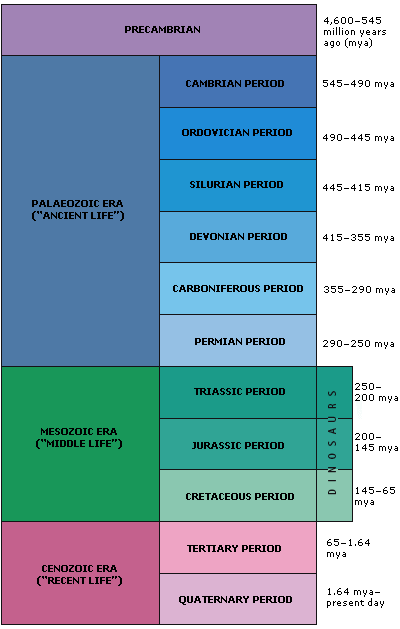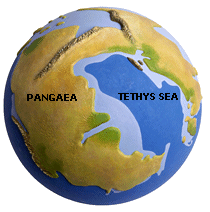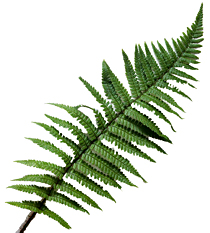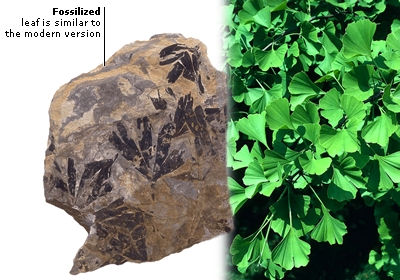DK Science: Era Of The Dinosaurs
Dinosaurs roamed the planet for about 165 million years, during a time in the Earth’s history called the Mesozoic Era. It is difficult to imagine how long this was, until we compare it with ourselves: humans have lived on Earth for less than two million years. During the Mesozoic Era, the Earth’s landmasses changed dramatically, new seas were formed, and plants and animals evolved.
Geologists divide Earth’s long history into a series of time zones, from the origin of the planet, about 4,600 million years ago, right up to the present day. The major divisions are called eras. These are sub-divided into smaller time zones called periods. Within each period are smaller divisions called Ages (not shown in this diagram). Dinosaurs lived in the Mesozoic Era, which is divided into the Triassic, Jurassic and Cretaceous Periods. Humans live in the Quaternary Period of the Cenozoic Era.
In the Triassic Period all land was joined together as one great landmass. Scientists call this super-continent Pangaea, which means “All Earth”.
The first dinosaurs lived in the early Triassic. Other reptiles also lived in this period, such as plant-eating rhynchosaurs. Fish and turtles swam in the sea, pterosaurs flapped their leathery wings in the sky, and the first mammals appeared.
Pangaea split into northern and southern landmasses in the Jurassic Period, divided by the ocean. In time, the two new continents moved apart.
Dinosaurs colonized the land, from huge plant-eating species to smaller meat-eating ones. Pterosaurs ruled the sky, the first birds appeared, and icthyosaurs and horseshoe crabs swam in the seas.
During the Cretaceous Period, Laurasia and Gondwana broke up into several smaller parts, beginning the formation of the continents we have today.
Fierce predatory dinosaurs hunted and scavenged for meat. Plant-eating dinosaurs grew body armour for protection. Crocodiles, turtles, and lizards flourished, and the first snakes appeared. Insects, birds, and pterosaurs flew in the sky, and small mammals ran on the ground.
Flowering plants appeared, which were the ancestors of today’s herbs, flowers, and broad-leaved trees. They became the main type of plant-life. Oak, maple, walnut, magnolia, and beech trees grew alongside the still abundant conifers, cycads, and tree ferns. There was still no grass.
To order this book direct from the publisher, visit DK's website.













